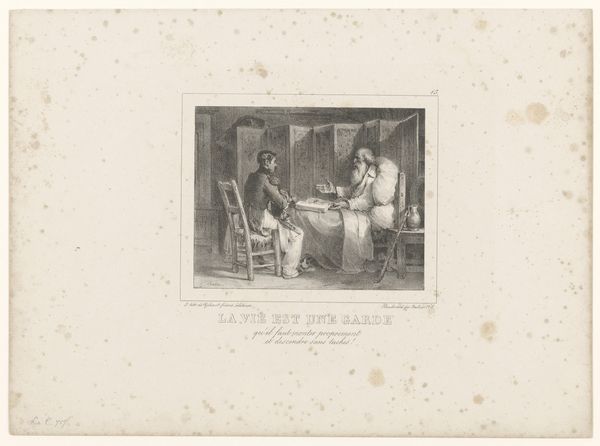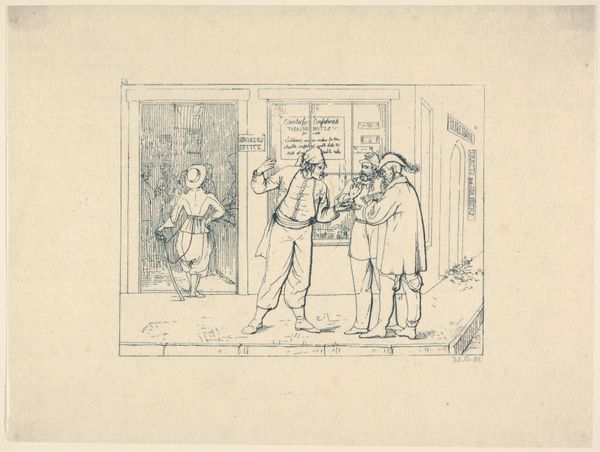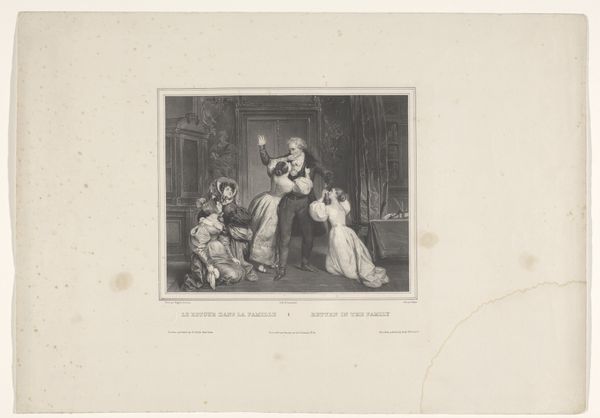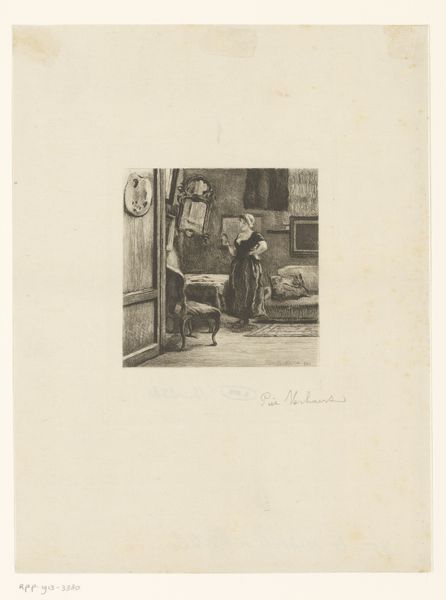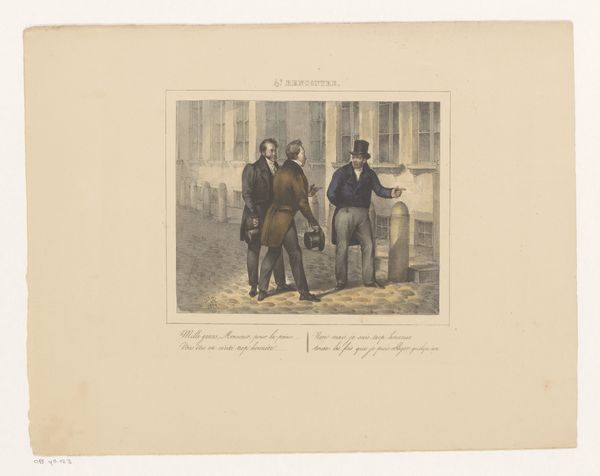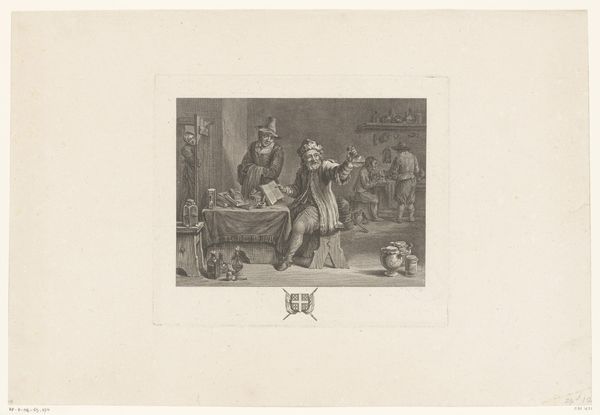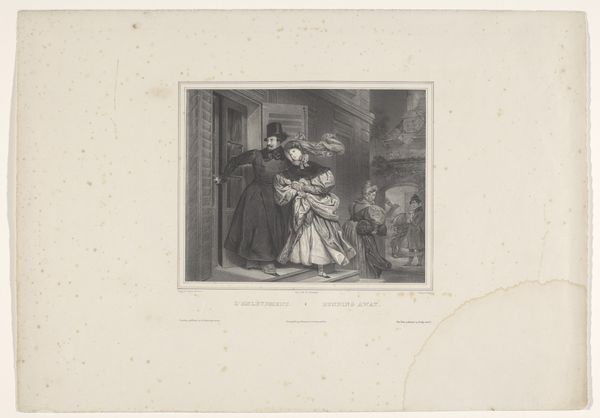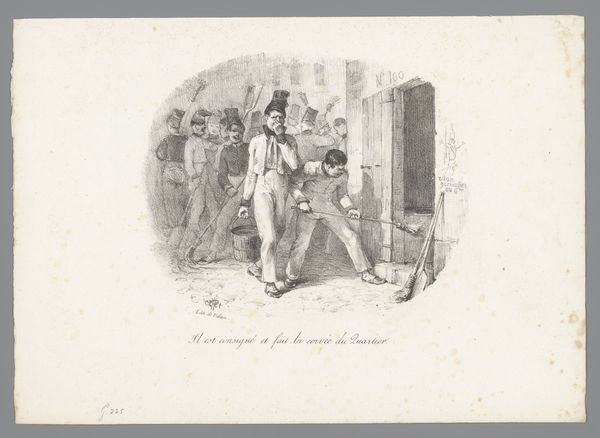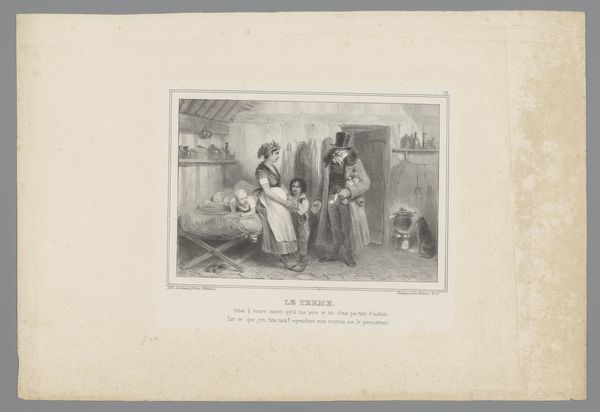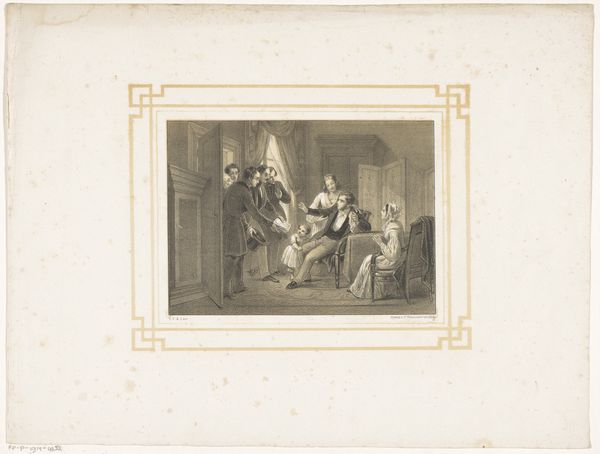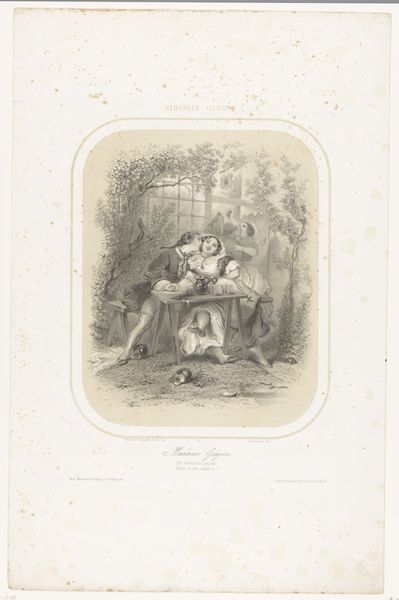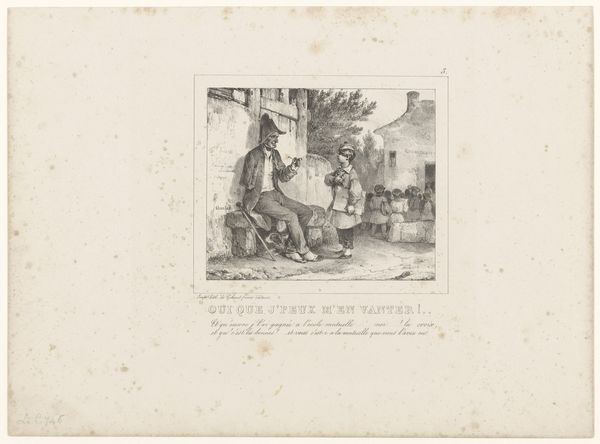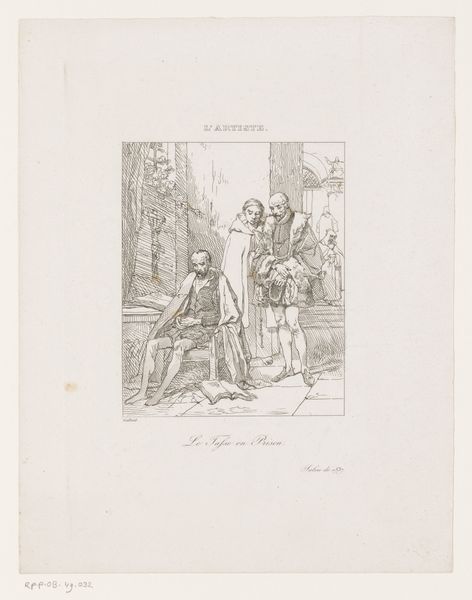
painting, watercolor, sculpture
#
portrait
#
neoclacissism
#
painting
#
classical-realism
#
figuration
#
watercolor
#
sculpture
#
watercolour illustration
#
genre-painting
#
history-painting
#
academic-art
#
watercolor
Dimensions: height 279 mm, width 365 mm
Copyright: Rijks Museum: Open Domain
Curator: Before us is Jules-Joseph-Guillaume Bourdet's watercolor from 1835, titled "Vader en zoon kijken naar een standbeeld van Jupiter"—Father and son gazing at a statue of Jupiter. Editor: It strikes me immediately as rather quaint, with its delicate application of color. The stiff figures contrast so sharply with the loose, almost whimsical depiction of the surrounding greenery. Curator: Indeed. Consider how the artist renders the texture of the marble—its cool, smooth surfaces rendered with such fine detail against the foliage and clothing which offer so much tonal variety and almost theatrical presence. The formal restraint highlights the monumentality of the statue itself. Editor: Though "monumentality" might be a strong word; it's domestic in scale, almost as if the statue has been placed in someone's garden. Given that, it challenges us to look into the cultural context of the period, specifically its attitude toward classical antiquity and civic identity during post-revolutionary years. Note how the artist integrates figures of a citizen father and his son viewing the statue. The way the composition has been assembled, father and son and Roman deity seem to all participate within a staged tableau of pedagogical intent. Curator: From my view, I see the meticulous precision of the brushstrokes across the three focal characters and a very conscious interplay between realism and idealization. Do you see how the face and drapery in Jupiter almost merge? In some ways, I sense the beginning of photographic effects and their diffusion of crisp edges in painting. Editor: I do, and there's a distinct ideological angle. The era valued the dissemination of republican values by turning to historical narratives that served the status quo. A middle-class citizen shows his boy Jupiter to perhaps teach him the foundational importance of Roman virtue and power. Curator: That dynamic introduces some interesting complexity within what first appears to be a simple genre scene. Editor: Agreed. The painting offers insight into the values that underpinned much of bourgeois life in the wake of revolution. Art being put to work. Curator: Seeing this, I appreciate how Bourdet merged academic style with real-world subjects, and that remains thought-provoking. Editor: I will now consider Bourdet and his peers and what new histories these paintings can speak into our present moment.
Comments
No comments
Be the first to comment and join the conversation on the ultimate creative platform.
